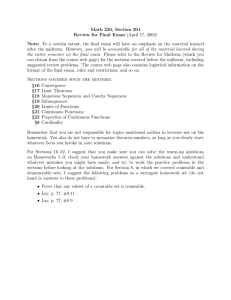Measure Theory Chapter 3
advertisement
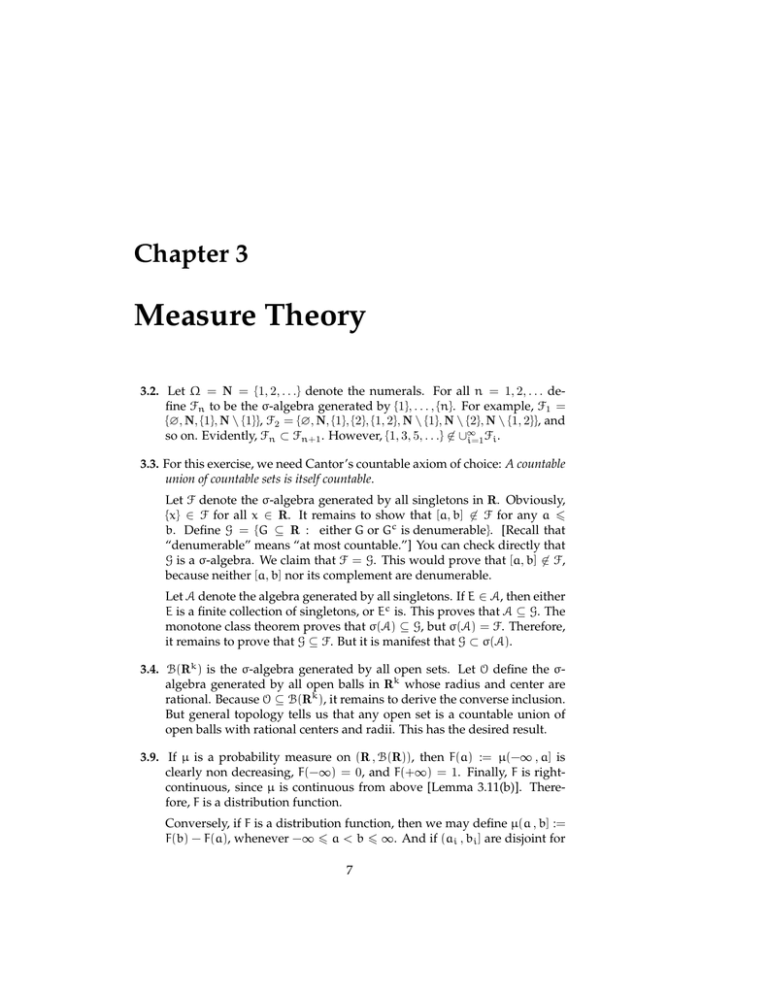
Chapter 3
Measure Theory
3.2. Let ⌦ = N = {1, 2, . . .} denote the numerals. For all n = 1, 2, . . . define Fn to be the -algebra generated by {1}, . . . , {n}. For example, F1 =
{?, N, {1}, N \ {1}}, F2 = {?, N, {1}, {2}, {1, 2}, N \ {1}, N \ {2}, N \ {1, 2}}, and
so on. Evidently, Fn ⇢ Fn+1 . However, {1, 3, 5, . . .} 62 [1
i=1 Fi .
3.3. For this exercise, we need Cantor’s countable axiom of choice: A countable
union of countable sets is itself countable.
Let F denote the -algebra generated by all singletons in R. Obviously,
{x} 2 F for all x 2 R. It remains to show that [a, b] 62 F for any a 6
b. Define G = {G ✓ R : either G or Gc is denumerable}. [Recall that
“denumerable” means “at most countable.”] You can check directly that
G is a -algebra. We claim that F = G. This would prove that [a, b] 62 F,
because neither [a, b] nor its complement are denumerable.
Let A denote the algebra generated by all singletons. If E 2 A, then either
E is a finite collection of singletons, or Ec is. This proves that A ✓ G. The
monotone class theorem proves that (A) ✓ G, but (A) = F. Therefore,
it remains to prove that G ✓ F. But it is manifest that G ⇢ (A).
3.4. B(Rk ) is the -algebra generated by all open sets. Let O define the algebra generated by all open balls in Rk whose radius and center are
rational. Because O ✓ B(Rk ), it remains to derive the converse inclusion.
But general topology tells us that any open set is a countable union of
open balls with rational centers and radii. This has the desired result.
3.9. If µ is a probability measure on (R , B(R)), then F(a) := µ(-1 , a] is
clearly non decreasing, F(-1) = 0, and F(+1) = 1. Finally, F is rightcontinuous, since µ is continuous from above [Lemma 3.11(b)]. Therefore, F is a distribution function.
Conversely, if F is a distribution function, then we may define µ(a , b] :=
F(b) - F(a), whenever -1 6 a < b 6 1. And if (ai , bi ] are disjoint for
7
8
CHAPTER 3. MEASURE THEORY
1 6 i 6 N, then
µ
N
[
i=1
(ai , bi ]
!
:=
N
X
µ(ai , bi ].
i=1
Appeal to telescoping sums in order to see that the preceding is a welldefined, rational definition. The preceding defines a finitely-additive
measure on the algebra A of all finite disjoint unions of intervals of the
form (a , b]. Thanks to the Carathéodory extension theorem, it remains
to prove that µ is countably additive on A; its Carathéodory extension
to B(R) = B(A) is the measure that we need. It remains to prove that if
B1 B2 · · · are in A and \1
n=1 Bn = ?, then limn!1 µ(Bn ) = 0; see the
proof of Lemma 3.15. Now we modify the proof of Lemma 3.15 slightly;
after all, Lemma 3.15 is the present problem with F(x) := x for 0 6 x 6 1.
In fact, all we have to do is to replace (3.6) with
n
F(↵n
j ) 6 F(aj ) +
✏
2n+2 k
.
(3.6 0 )
n
[We can do this because F is right continuous.] Then, the remainder of
the proof of Lemma 3.15 goes through verbatim.
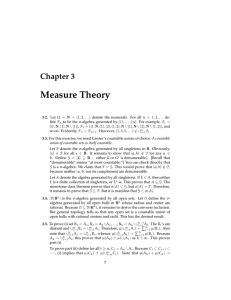
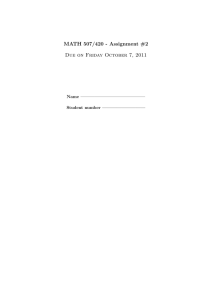

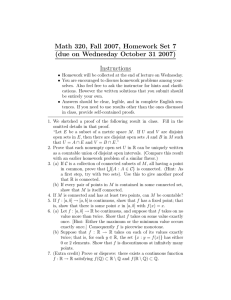
![MA1124 Assignment5 [due Monday 16 February, 2015]](http://s2.studylib.net/store/data/010730348_1-77b9a672d3722b3831a1e52597d5a881-300x300.png)
